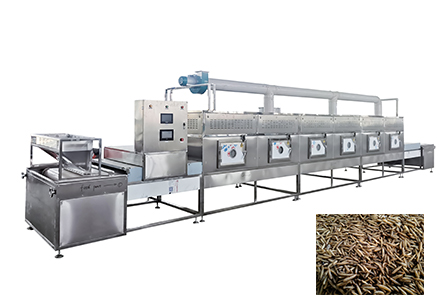


With the development of the economy, environmental protection, and agriculture, the value of black soldier fly larvae in effectively converting various organic wastes into high-value insect protein and fat has been discovered, leading to an increasing number of people entering the black soldier fly breeding and deep processing industries.
This article will guide you through the drying processing process of black soldier fly larvae.
1.Sieving
Our specialized sieving machine separates the appropriate-age black soldier fly larvae from the insect excrement and residual feed. The larvae crawl out of the mesh or are sifted out, while the larger excrement and uneaten feed are separated.
2.Cleaning
The sieved larvae are sent to a cleaning machine, where the tumbling water and air bubbles clean the larvae, removing impurities such as feces and feed debris adhering to the larvae's surface, thereby improving the hygienic quality of the product.
3.Air drying
The cleaned larvae are transported in an air drying machine, where strong winds blow away any water trapped in the crevices of the larvae's bodies, removing free moisture from the surface of the cleaned larvae. This significantly reduces energy consumption and time in the subsequent drying process.
4.Drying – The Core Process
Drying is the most crucial step in the whole production process. The quality of drying directly affects the nutritional content, color, taste, and shelf life of the product. Our company's microwave drying equipment for black soldier fly larvaes utilizes a combined microwave and infrared design. We provide tunnel-type microwave drying for continuous drying and cabinet-type microwave drying for batch drying. The dried larvae are puffed, crispy, and have a vibrant color. Dried larvae are widely used in chicken feed, bird feed, animal feed, and animal protein.
The dried larvae are also processed for secondary processing such as crushing and oil extraction.
5.Cooling
The dried black soldier fly larvae are cooled in a cooling facility to facilitate subsequent packaging.
6.Packaging
Use moisture-proof packaging materials and store in a cool, dry, well-ventilated warehouse.